News Brief
These Satellite Images Show How Indian Positions On Heights South Of Pangong Lake Are Dominating Chinese Camps
Swarajya Staff
Sep 14, 2020, 10:47 AM | Updated 02:44 PM IST
Save & read from anywhere!
Bookmark stories for easy access on any device or the Swarajya app.
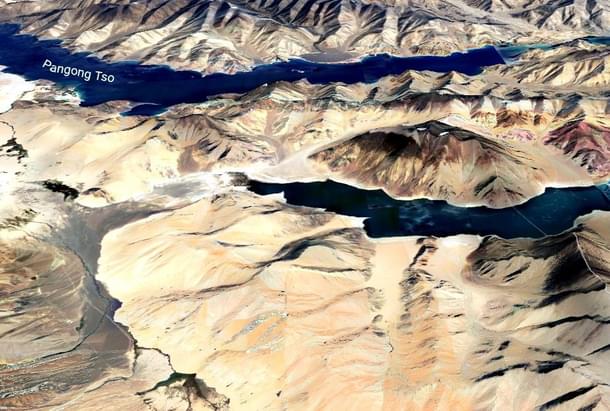
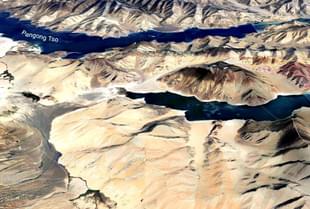
Following an operation undertaken by the Indian Army and the Special Frontier Force south of the Pangong Lake on the intervening night of 29 and 30 August, news reports said that India had taken heights dominating Chinese camps in the area around the Spanggur Lake. Latest satellite images confirm this claim.
A satellite image dated 11 September, posted on Twitter by anonymous satellite imagery expert @detresfa, shows Indian positions near Rezang La and Richen La, two areas in which India is said to have taken positions to deter the Chinese.
Indian Army camps and support positions on these heights, the satellite image shows, are located at an elevation of around 5,000 metres and about 10 kilometres away from the shore of the Spanggur Lake. The Chinese camps, spread across the area, are located on lower ground very close to the shore of the lake.
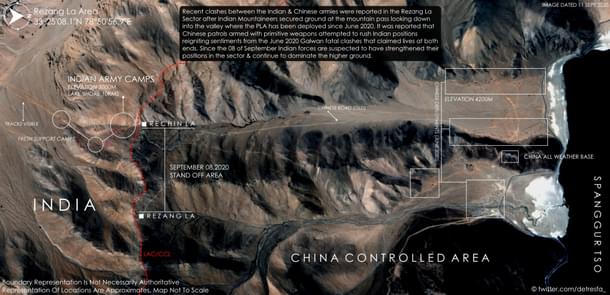
Being deployed on the heights, Indian soldiers have a clear line of sight into the valley where the People’s Liberation Army has its camps.
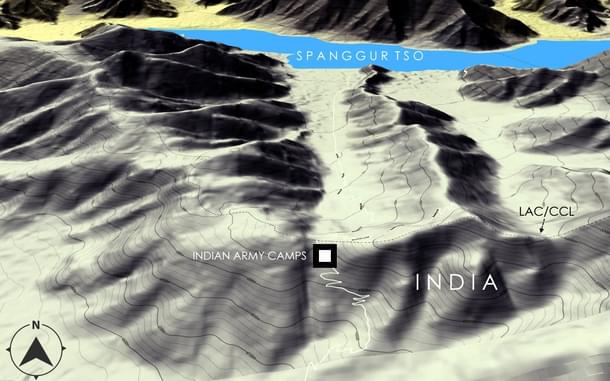
New tracks linking the new Indian positions on these heights with bases in the rear are clearly visible in the image, suggesting that the forces have established routes to support these critical positions and keep them supplied.
Tracks leading from Chinese camps towards China’s perception of the Line of Actual Control can also be seen in this satellite image. This could be the route used by the Chinese soldiers who reached close to Indian positions early last week to force Indian soldiers deployed here to move back.
The satellite image also shows the likely area of the the close-quarter standoff that ensued.
A Chinese road, running along the shore of the lake, can also be seen in this image.
The road links Chinese camps in the area around the Spanggur Lake with the Xinjiang-Tibet Highway near the town of Rutog in occupied Tibet.
This link is important for China to sustain its military posture around the Spanggur Lake.
From its positions on the heights, Indian soldiers can keep an eye on Chinese movements on the road and in the camps on the shore of the lake.
North of Rezang La and Richen La lies the Spanggur Gap, a nearly two-kilometre wide break in mountains opening in the Chushul Valley.
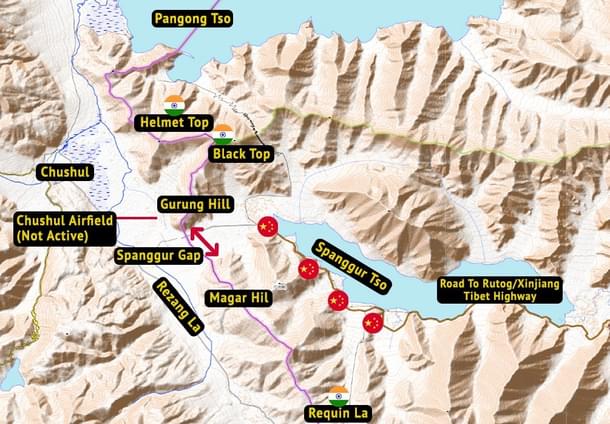
The Indian Army has long believed that China, in the event of hostilities or war, can try to launch an offensive through the Spanggur Gap.
To deter China, the India Army has taken positions on the heights north and south of the Spanggur Gap — Gurung Hill and Magar Hill.
This satellite image, circulating on Chinese social media and posted with annotations on Twitter by handle @detresfa_, shows Indian camps and possible gun positions on Gurung Hill, the height just north of the Spanggur Gap.
While Indian positions are located at an elevation of around 4,700 metres, Chinese camps are at 4,500 metres and only 700 metres away from India’s.
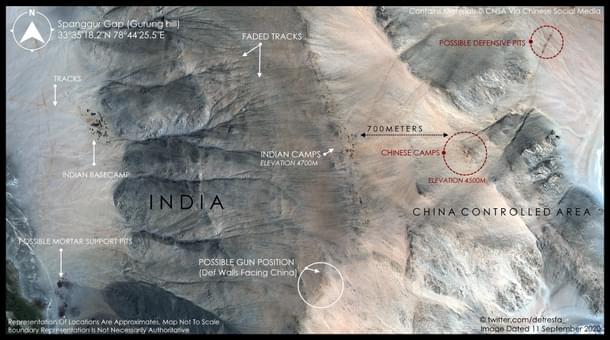
Indian presence on Gurung Hill, however, looks much more robust than the Chinese.
Not only does the Indian Army appear to have a larger number of camps, it also seems to have gun positions with defensive walls facing Chinese camps.
These gun positions can target Chinese camps in the larger area in case of hostilities.
India also has a large base camp towards the west of these positions.
Other Indian Army positions and tracks are also visible in the image.
Indian camps on the Gurung Hill can monitor all Chinese movements towards the Spanggur Gap and target China’s Moldo garrison.





